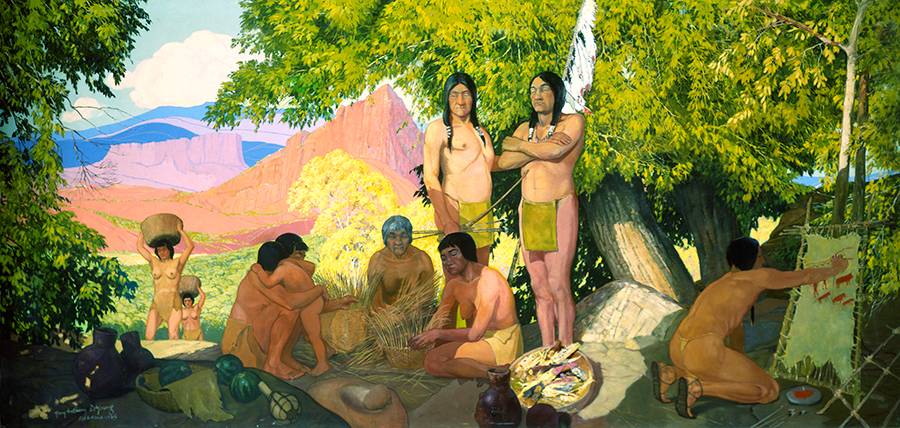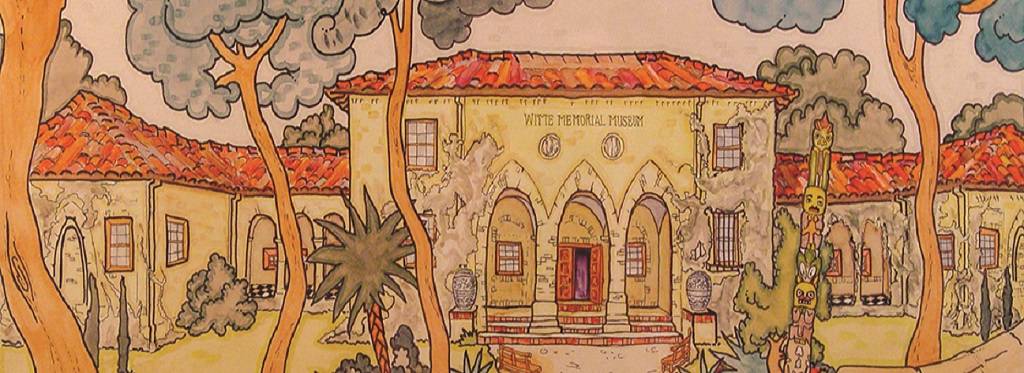Texas Basketmaker Indian Mural, 1934

Texas Basketmaker Indians Mural
Agency: Civil Works Administration
Date: 1934
Harry Anthony De Young was one of eight artists commissioned to paint murals for public buildings in San Antonio as part of the Public Works of Art Project administered by the Civil Works Administration. It was the first New Deal project at the Witte Museum.
De Young was selected to paint a mural for the Witte Museum inspired by the museum’s archeological excavations in the Lower Pecos Canyonlands in the early 1930s. The excavations revealed a variety of woven plant material used to make baskets, mats, cordage, nets, and sandals, leading early archeologists to refer to them as the Basket Makers.
The oil on canvas mural is just over 16 feet long and 8 feet tall. It was displayed in the entrance hall of the museum from 1934 to 1970 when it was removed for building renovations. The mural does not reflect current scholarship regarding the lifeways of the people of the Lower Pecos Canyonlands and is not on display.
Today, the Kitty West Nelson Ferguson People of the Pecos Gallery provides a unique look into the prehistoric hunter-gatherers of Texas who embraced their bountiful, natural environment. Spanning the entire second floor of the New Witte, you will encounter life-sized recreations of ancient camps to explore how people of thousands of years ago hunted, cooked and socialized. Explore the sheltered overhangs in the Lower Pecos Canyonlands, which provided a way of life for more than 9,000 years and an artistic record unmatched in North America. See projected images of rock art that span nearly 4,000 years of artistic expression and visual narratives of ancient stories.
Sources:
Steinfeldt, Cecilia. Art for History’s Sake: The Texas Collection of the Witte Museum. San Antonio: Texas State Historical Association, 1993.
Witte Museum Archives
Woolford, Bess Carrol and Ellen Quilin. The Story of the Witte Memorial Museum, 1922-1960. San Antonio: San Antonio Museum Association, 1966.
